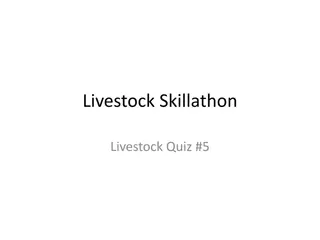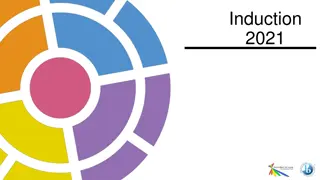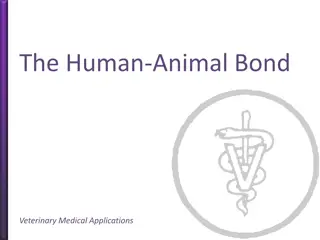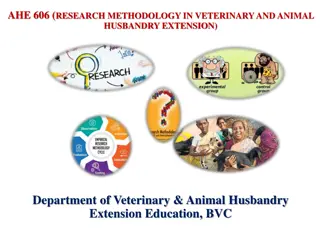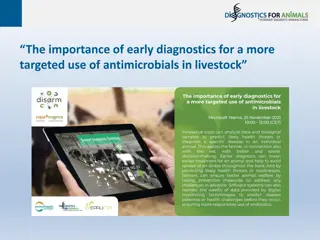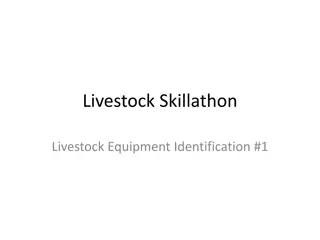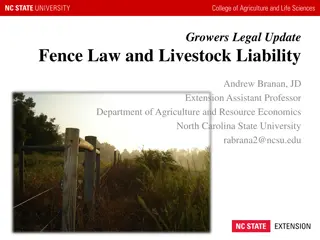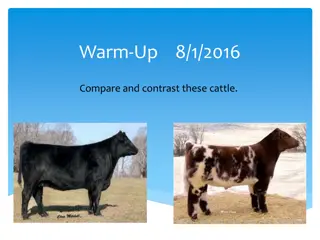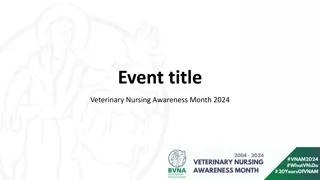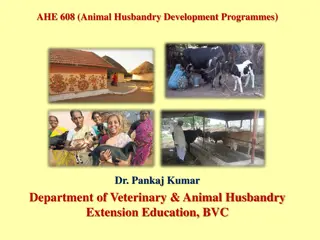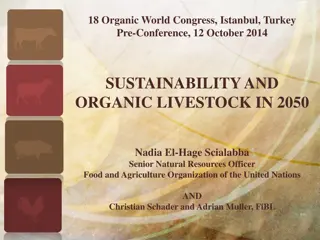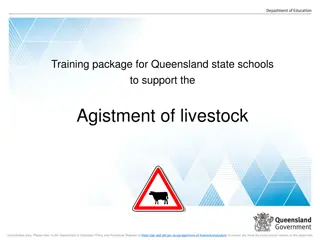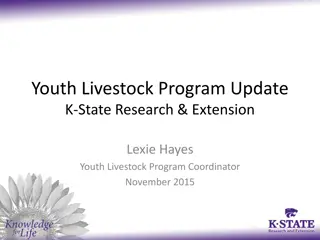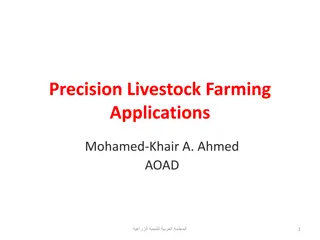Understanding Communication for Livestock Development in Veterinary & Animal Husbandry
Explore the essential aspects of communication in livestock development, covering concepts, models, types, and functions of communication. Learn about the origins of communication, basic concepts like fidelity and noise, and the importance of effective communication in agricultural extension. Discover key factors such as empathy, homophily, and time lag that influence successful communication strategies in veterinary and animal husbandry practices.
Download Presentation

Please find below an Image/Link to download the presentation.
The content on the website is provided AS IS for your information and personal use only. It may not be sold, licensed, or shared on other websites without obtaining consent from the author. Download presentation by click this link. If you encounter any issues during the download, it is possible that the publisher has removed the file from their server.
E N D
Presentation Transcript
AHE 602 (COMMUNICATION FOR LIVESTOCK DEVELOPMENT) Department of Veterinary & Animal Husbandry Extension Education, BVC
Topics covered Communication- meaning, concept, purpose and process. Models and theories of communication. Types of communication- intrapersonal, interpersonal, verbal and non-verbal. Criteria of effective communication, Determinants of communication- Empathy, credibility, fidelity, distortion, feed back and barriers to communication
Communication origin: Latin Communis meaning Common Communication is a conscious attempt to share information, ideas, attitudes and the like with others Rogers and Shoemaker (1971) The Process by which Messages are transferred from a Source to Receiver. Leagans (1961) The Process by which two or more people exchange ideas, facts, feeling or impressions in ways that each gains a common understanding of the meaning, intent and use of messages.
Basic functions of communication: Information function: Basic requirement of adopting and adjusting oneself to the environment. Command or instructive function: In hierarchical structure. Influence or persuasive function: Sole purpose of communication ..Berlo Integrative function:
Basic concepts in communication: Communication fidelity: Faithful performance of communication process by all its elements (Communicator, Message, Channel and Receiver). Noise and fidelity are two side of the same coin. Communication gap: Refers to communicated by the extension agent and what has actually been received by the audience. Where the message does not reach the target- Communication must be made available. Communication must be need based. Communication must be in time. Communication must use more than one channel. Where the message fails to produce desired impact- Use credible channels. Repeat the message at suitable interval. Precautions against message distortion. Increase understandability & give complete information. difference between what was
Time lag in communication: Delay at different element level in communication process. Empathy: Ability on the part of one person to understand the other person s internal frame of mind and reference, and accept it. Ability of an individual to project oneself into the role of another person, to be able to appreciate the feeling, thinking and actions of another person. Homophily: It refers to the degree to which a pair of individual communicate are similar in certain attributes such as beliefs, education, social status, and the likes. Heterophily: It refers to the degree to which pairs of individuals who interact are different in certain attributes.
Propaganda: Deliberate manipulation of peoples beliefs, values and behavior through words, gestures, images, thoughts, music. It aims at presenting only propagandist s side of arguments without considering receiver s side. It suppresses the truth and authoritarian in approach in influencing the people. Publicity: Similar to propaganda but based on truth. Persuasion: More democratic approach for influencing the people to bring desirable change. Extension agents provide lot of arguments in favor of acceptance of the recommendation. Opinion leadership: Degree to which an individual is able to influence other individuals attitudes or overt behavior informally in a desired way with relative frequency.
Types of communication Intrapersonal: Communication with one s self. Organizing and converting sensory data into meaningful messages. It is co-function of individual and his immediate environment e.g. Reading news paper, Talking with soul etc. Interpersonal: Occur in face to face manner where participants can see, hear and even touch each other. Organizational: An organization is stable system of individuals who work together to achieve through hierarchy of rank and division of labor. Vertical communication Horizontal communication Diagonal communication Inter organizational: between two system of organization.
Models of communication Contextual differences in situations leads to different models of communication. Aristotle s communication model : Most primitive model 1) Speaker 2) Speech 3) Audience Berlo s communication model : 1) Source 2) Message 3) Channel 4) Receiver Leagan s communication model : 1) Communicator 2) Message 3) Channel 4) Treatment 5)Audience 6) Response




